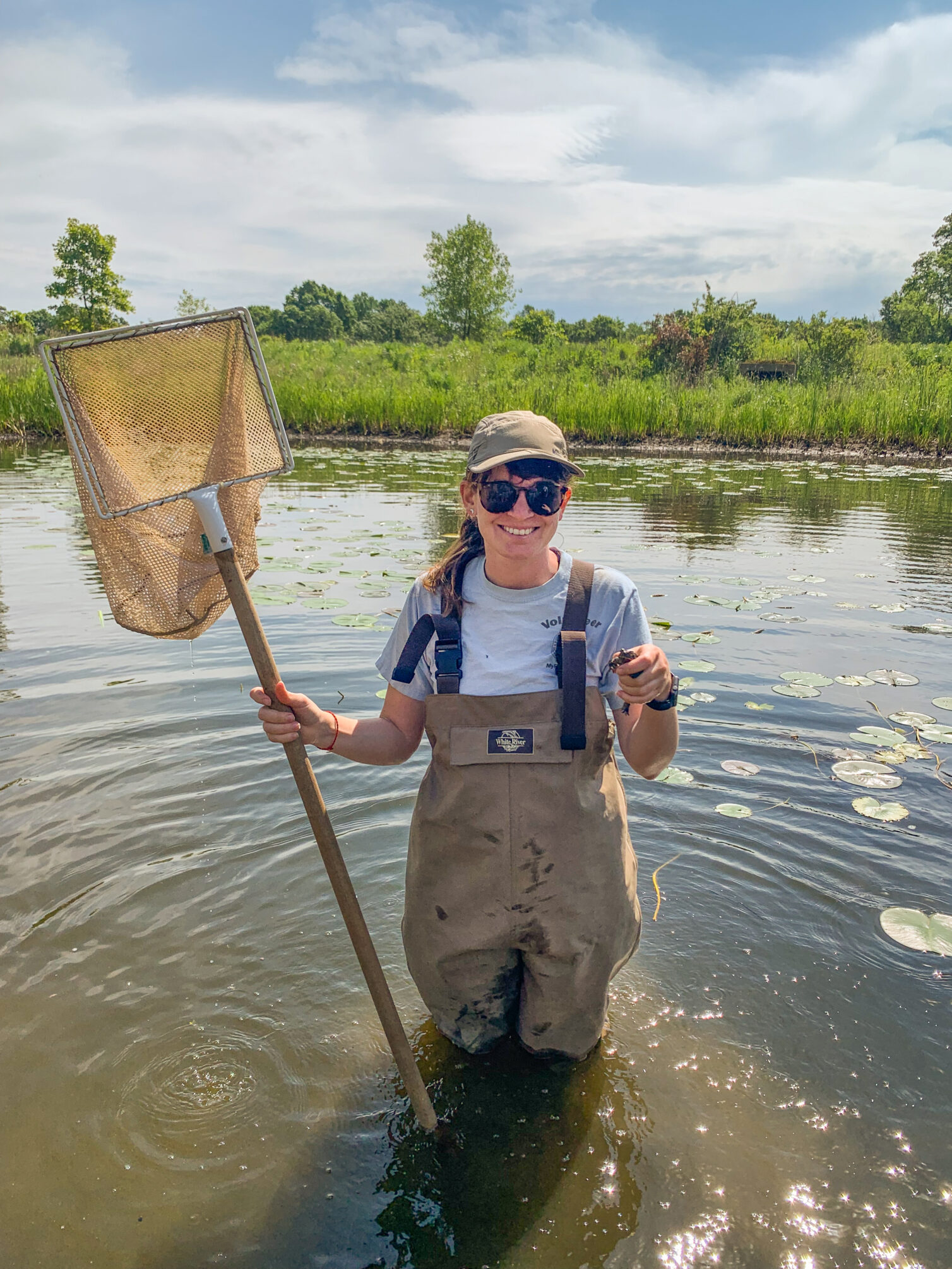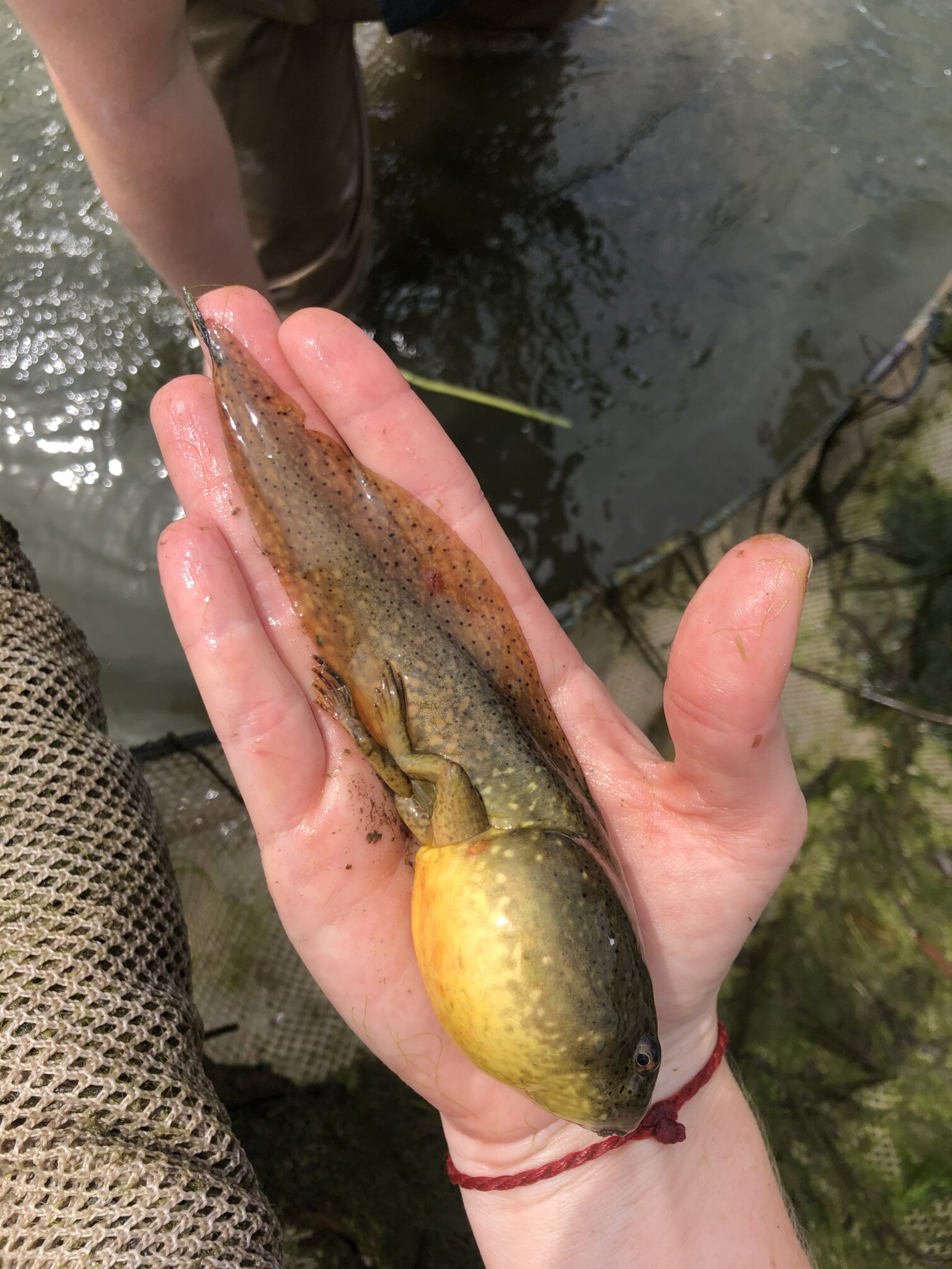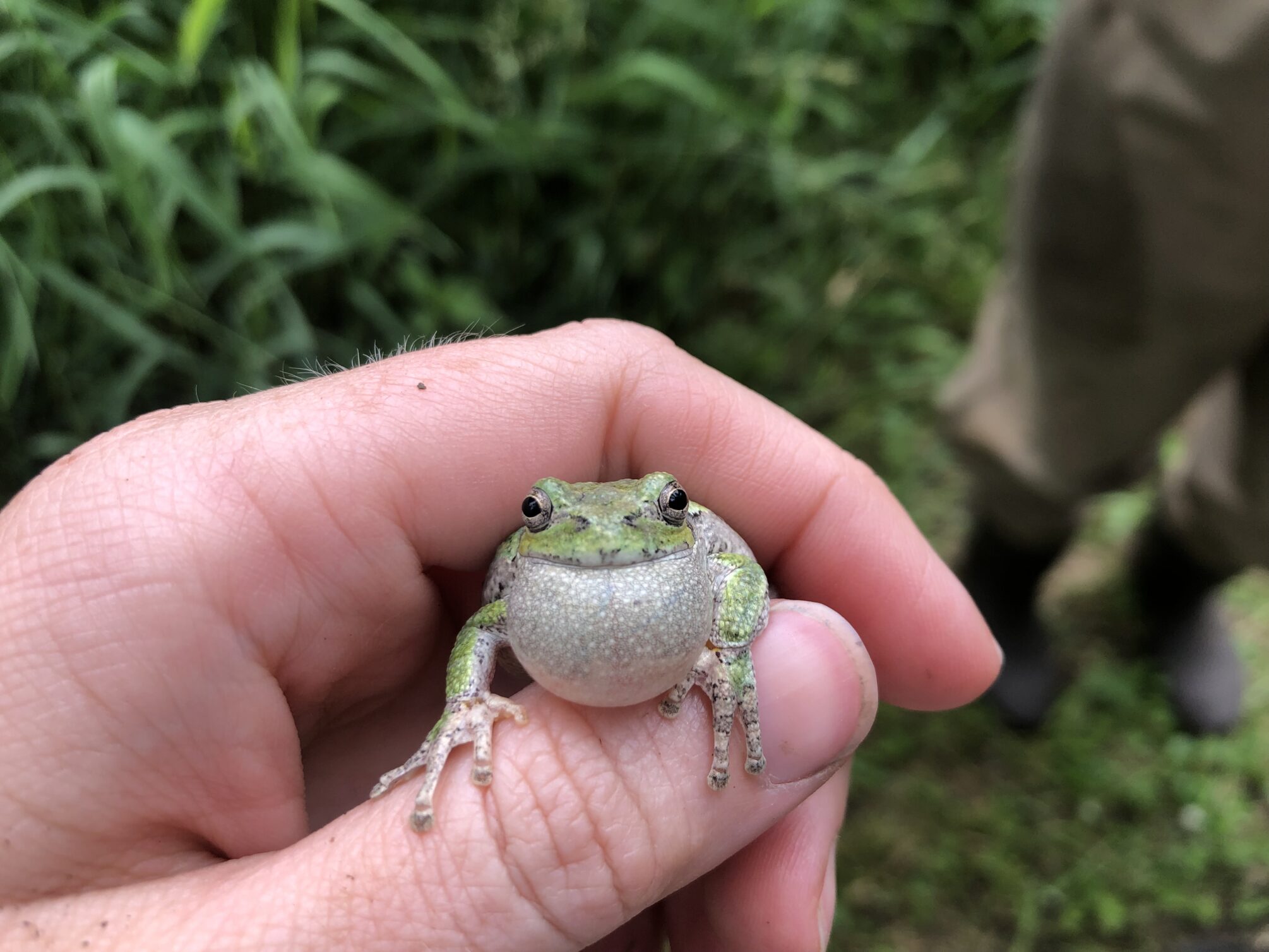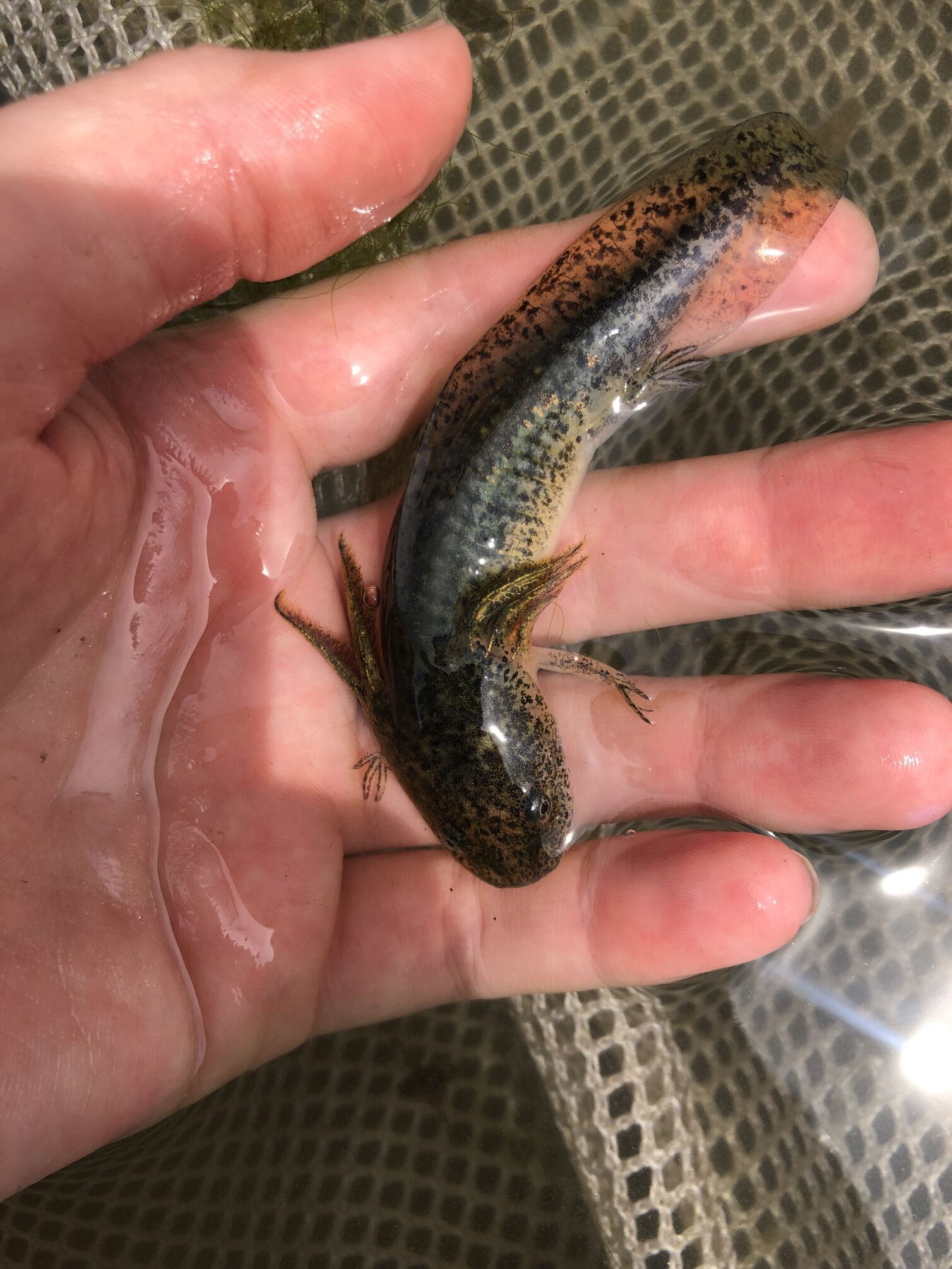Urban pond habitats and specific management practices promote amphibian diversity and abundance in Madison, Wisconsin

By Tim Ohlert, graduate student at the University of New Mexico
Urban landscapes create challenging conditions for animals. Displaced by buildings or infrastructure, animals have few options for suitable habitat in urban environments designed for human activities. Yet, despite pollution from roads and fragmentation of landscapes, amphibian communities manage to persist in cities across a range of urban ponds.
Urban ponds are a staple feature of local parks, golf courses, and roadside drainages. Cities are dotted with small bodies of water. The ponds are designed for aesthetics, recreation, and stormwater collection. Though urban ponds are designed as infrastructure for humans, they have also become critical habitat for urban amphibians.
Dr. Erin Sauer and her team at the University of Wisconsin-Madison assessed the conservation value of a range of urban ponds and management practices in a recent paper in the journal Urban Ecosystems titled “Multiscale drivers of amphibian community occupancy in urban ponds.” They surveyed amphibian diversity in 96 urban ponds around the city of Madison, Wisconsin, home of the North Temperate Lakes (NTL) LTER. Using visual encounter surveys, recorded animal calls, dip net sweeps, and dragged seine nets, they assessed the abundance and diversity of amphibians around the city.
Amphibians select for habitat type, some persist through pollution
Urban ponds are often designed to collect runoff from streets filled with pollutants related to automotive transportation. In Wisconsin, this includes heavy loads of salt used to treat icy roads in winter. Indeed, the researchers found that ponds with runoff from roads had high levels of chloride and nitrate, pollutants associated with urban water runoff. Though these urban stormwater ponds held fewer amphibian species than ponds with better water quality, stormwater ponds were still sufficient to support many of the region’s common amphibians.
They found that amphibians’ preference for ponds was most closely related to the habitat in and around the pond. Aquatic amphibians, such as the American bullfrog (Lithobates catesbeianus), were most commonly found in ponds surrounded by wetlands with great abundance of algae, an important source of food for tadpoles. On the other hand, upland species, such as the grey tree frog (Hyla versicolor/chrysoscelis), spend more time on land and primarily use the water as habitat for laying eggs. Upland species, therefore, were most successful in smaller ponds near forest habitat.


Promising potential for amphibian conservation on golf courses
Dr. Sauer’s team found habitat was the most important determinant of amphibian diversity across urban ponds. Incredibly, the team found the rare tiger salamander (Ambystoma tigrinum) in the most pristine urban ponds: those located on golf courses.
Compared to other types of urban ponds, golf courses have many potential benefits for conservation, since ponds within a given course usually are not separated from other habitat by impervious surfaces like roads and sidewalks. Additionally, golf courses have lower loads of urban pollution and can therefore have better overall water quality than ponds which primarily function for stormwater management. As a result, ponds on golf courses supported some of the most diverse communities and rarest species of amphibians.

Golf courses in this study employed a wide variety of management strategies and goals for their ponds, ranging from encouraging natural growth and habitat to active vegetation removal around the perimeter of ponds. Even though these ponds are managed to optimize environments for golfers, management strategies for ponds on golf courses also have implications for amphibians. Dr. Sauer says golf courses that allowed wetland habitat to naturally develop around ponds held the rarest taxa. These findings emphasize the importance of management practices to the conservation value of urban ponds.
Small differences in the management of ponds can make a big difference to their conservation value. Passive management strategies, like allowing more vegetation to grow within ponds and mowing less close to pond edges, could be a simple, low-effort way to increase the conservation value of urban ponds. With this knowledge, urban land managers can make decisions that increase the conservation value of the ponds in their cities. But this study demonstrates that urban ponds provide immense conservation value to amphibians—even if they weren’t initially designed for them.










